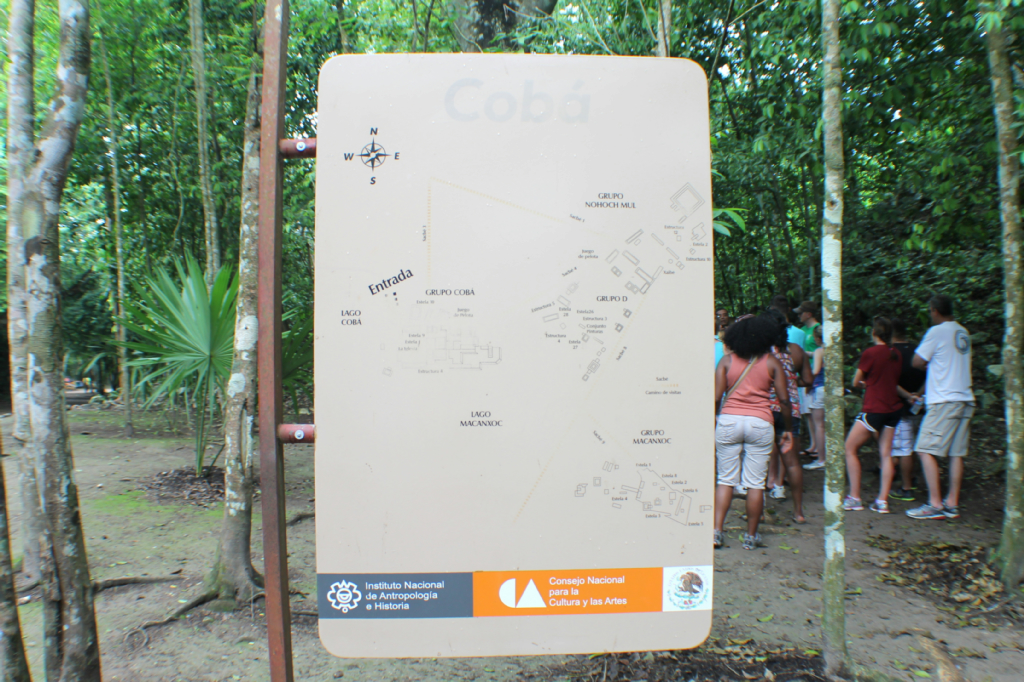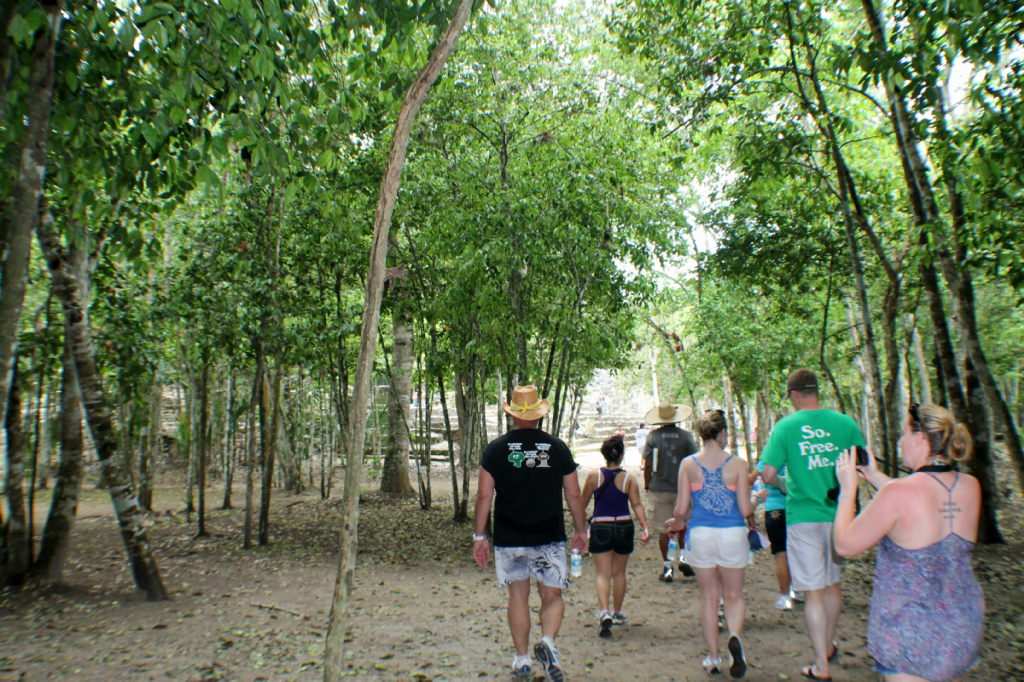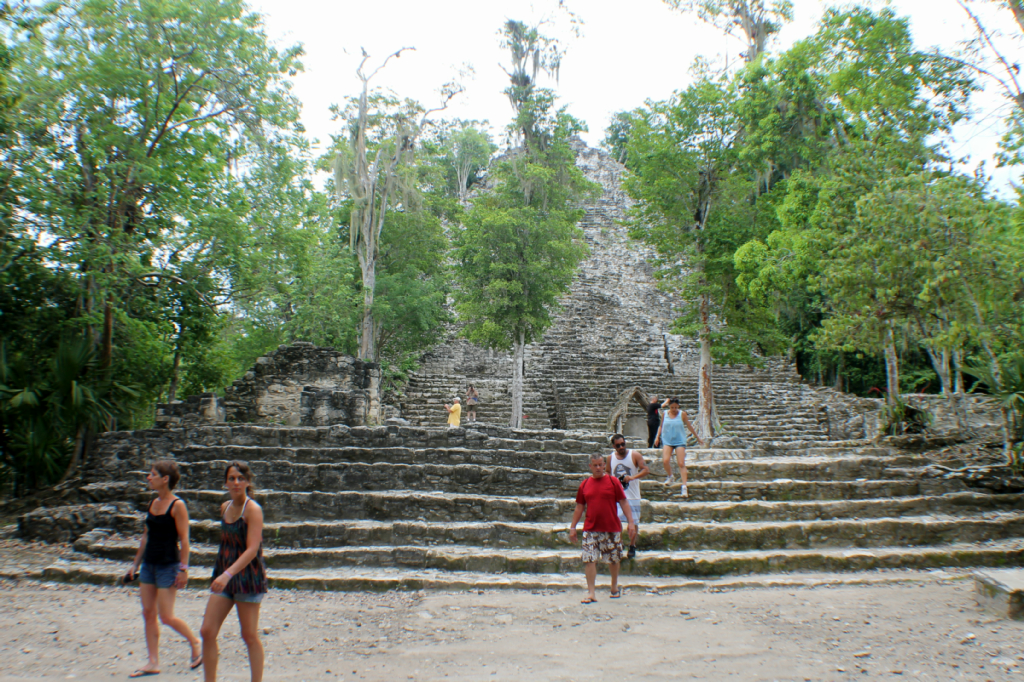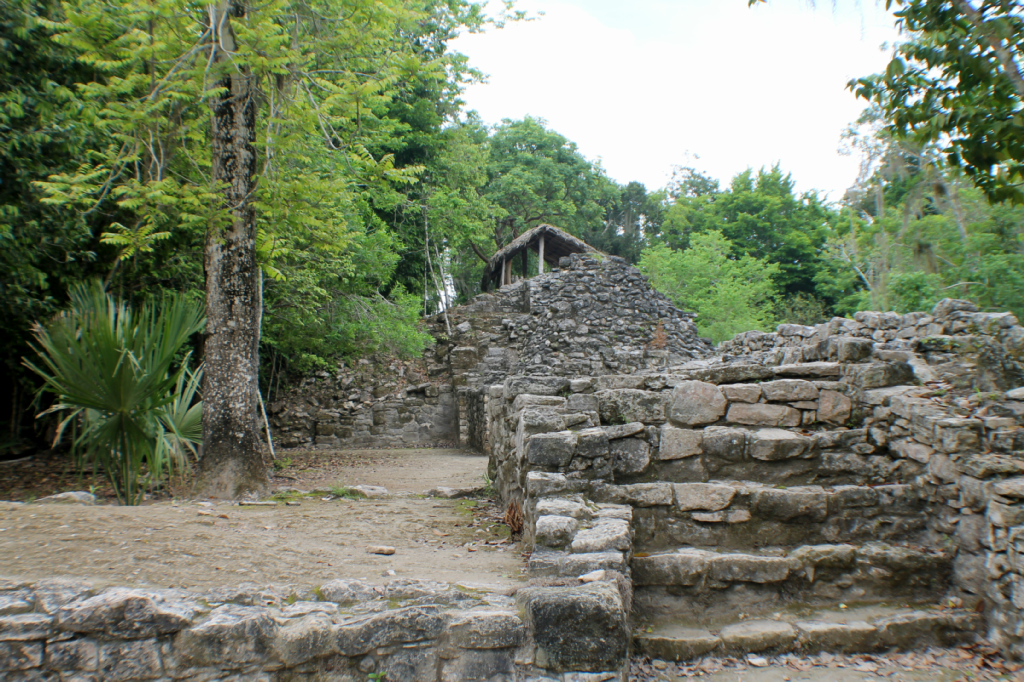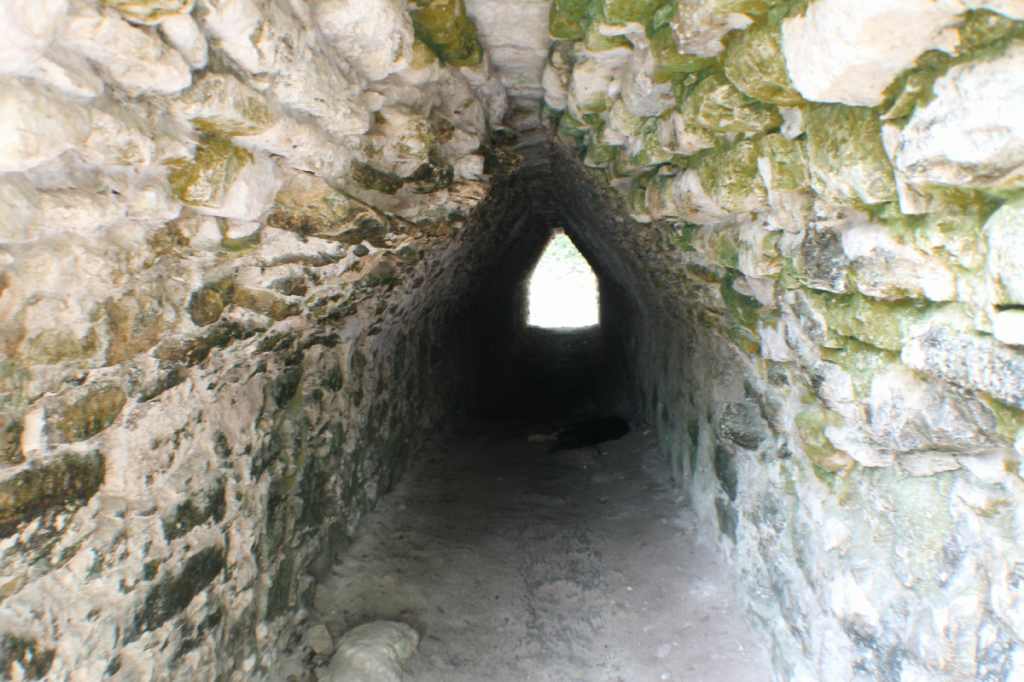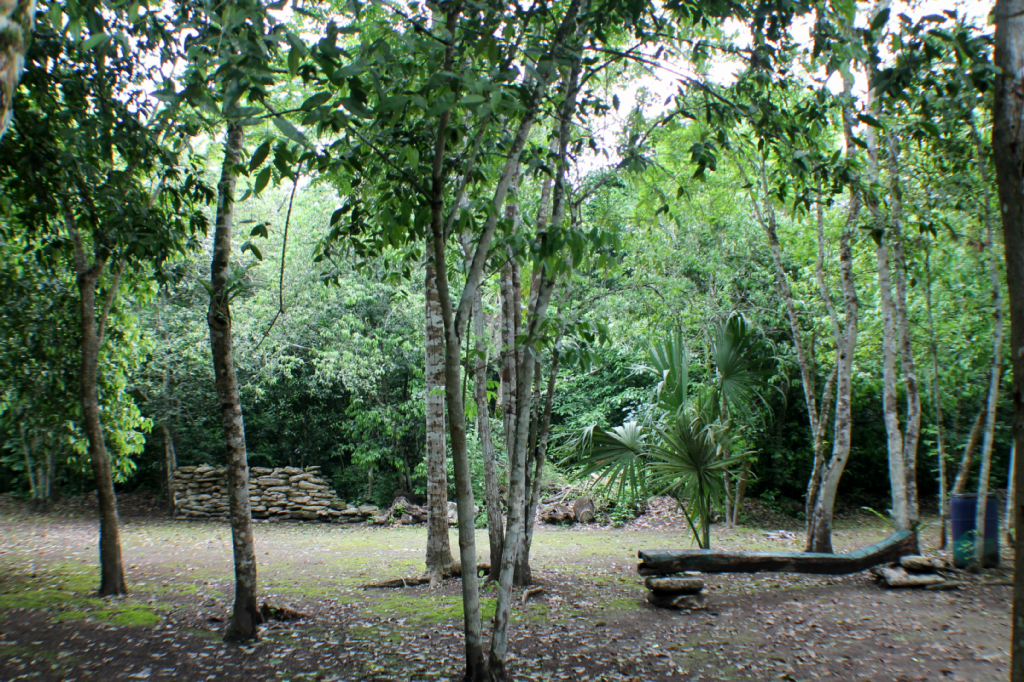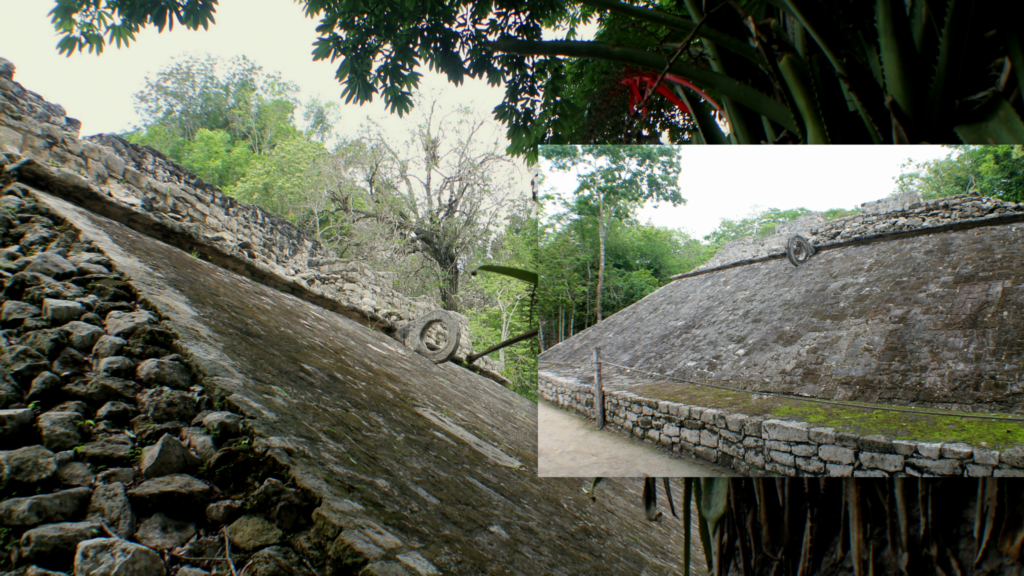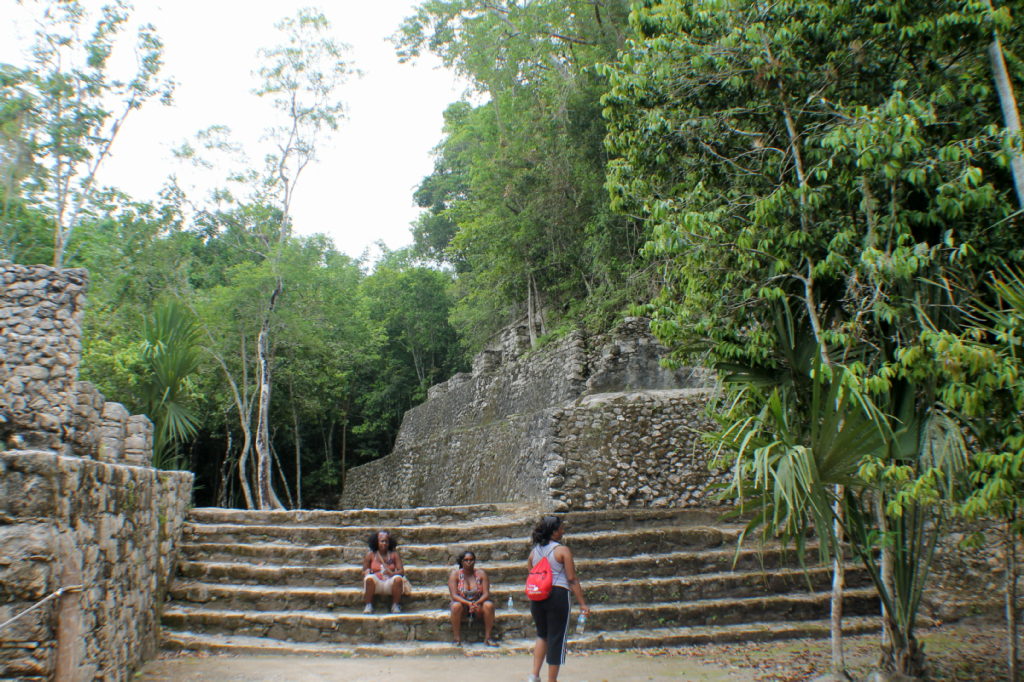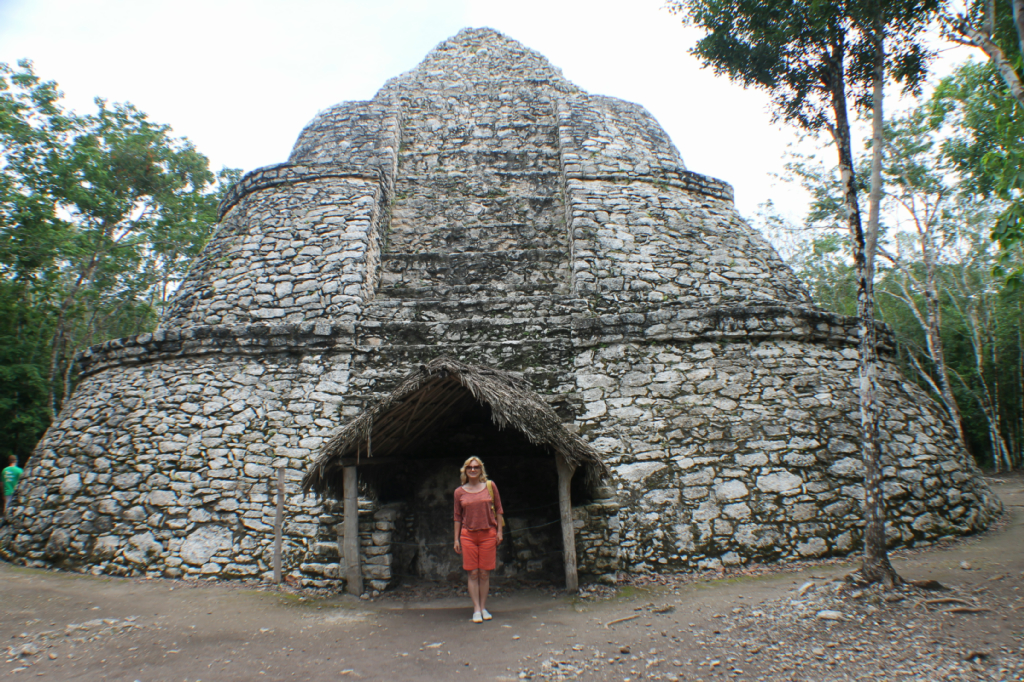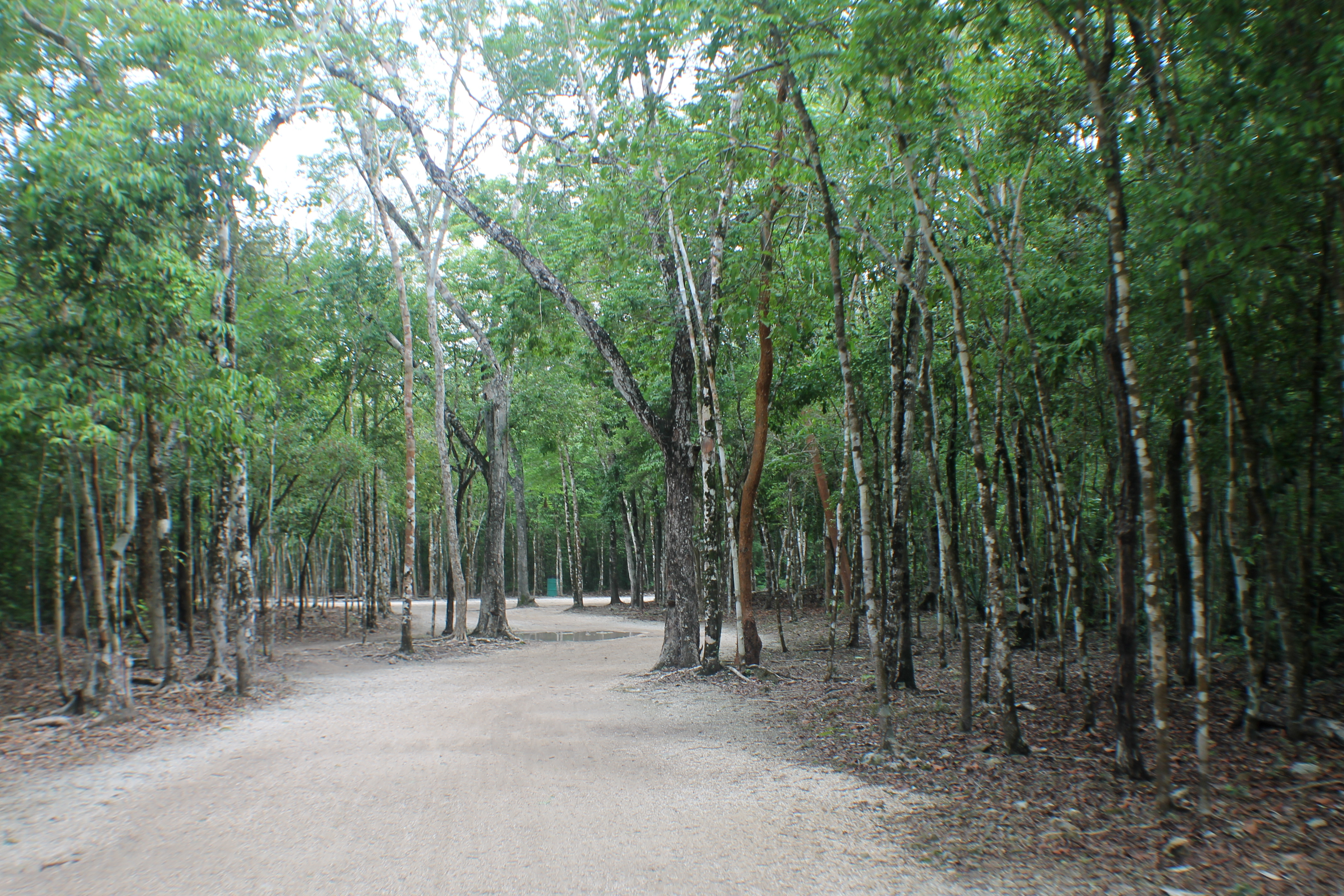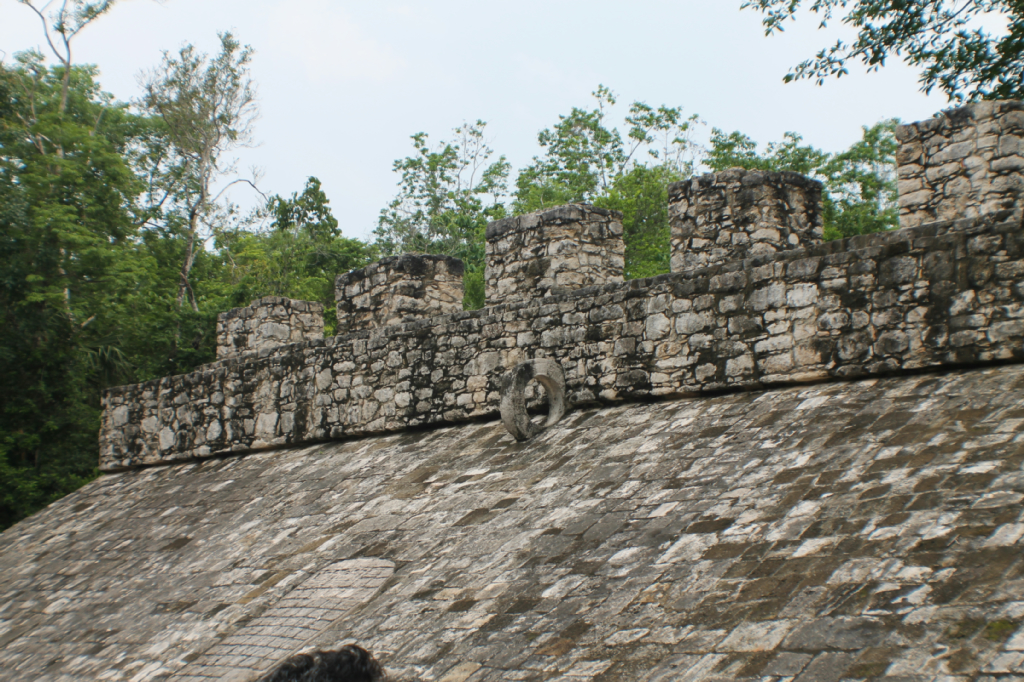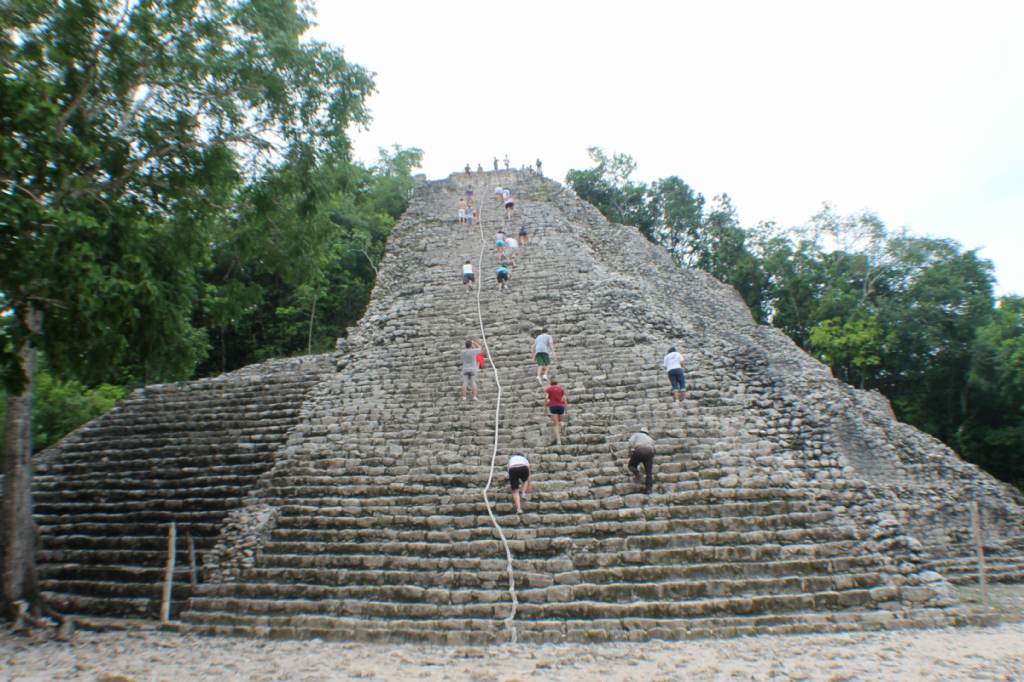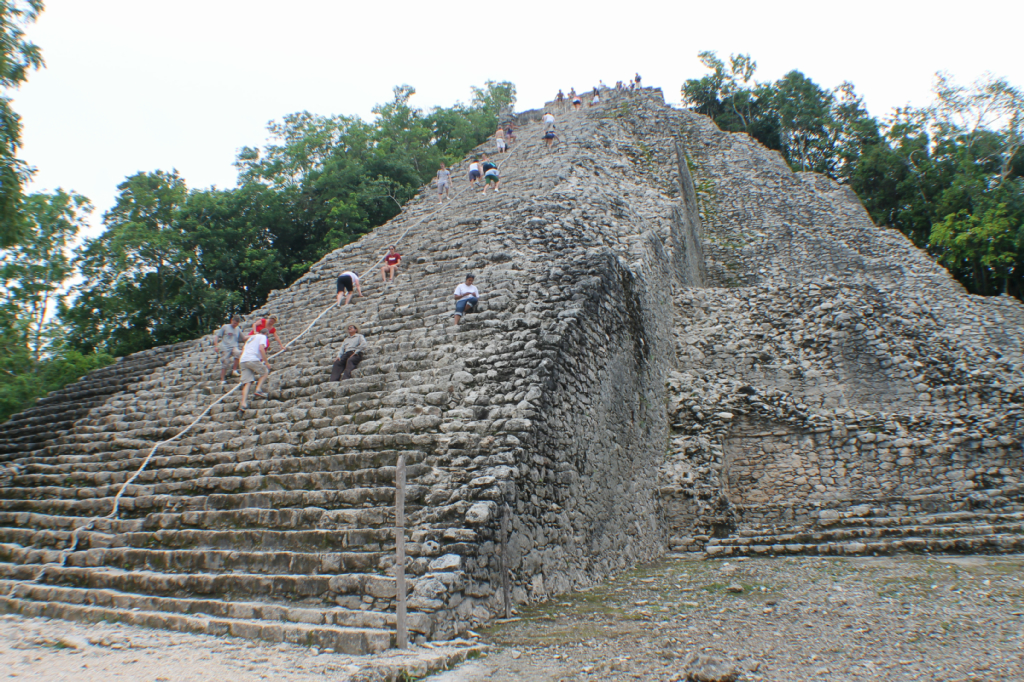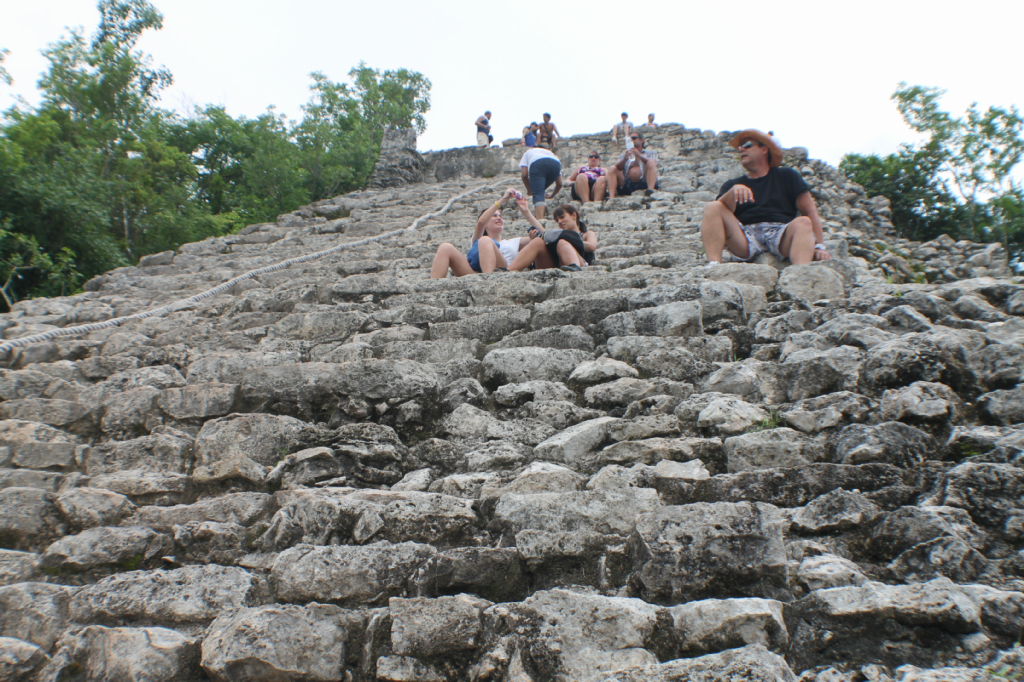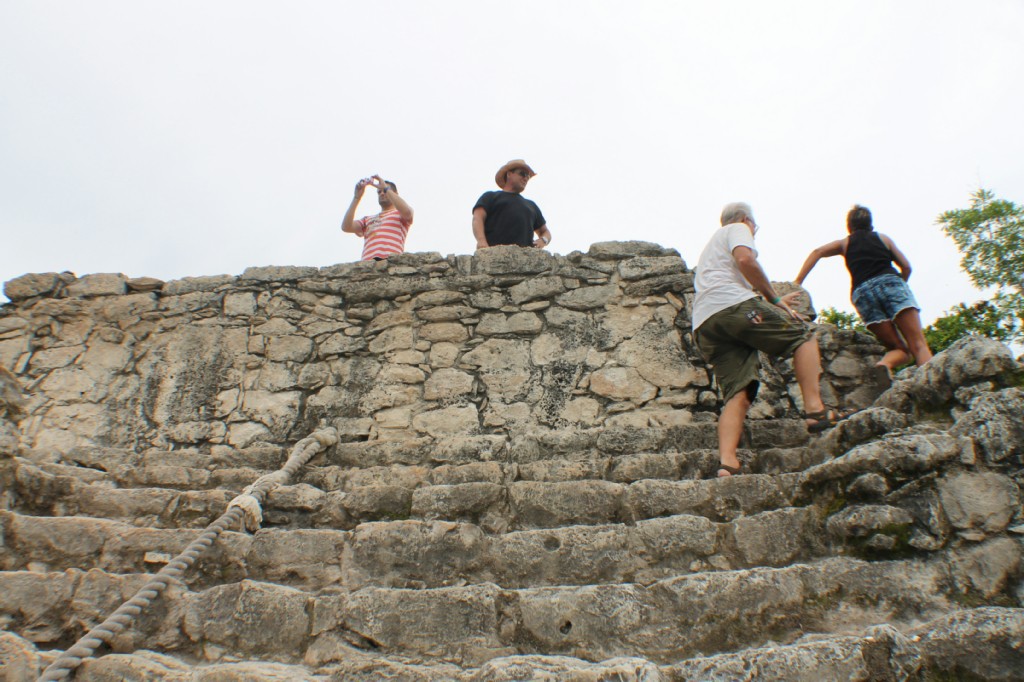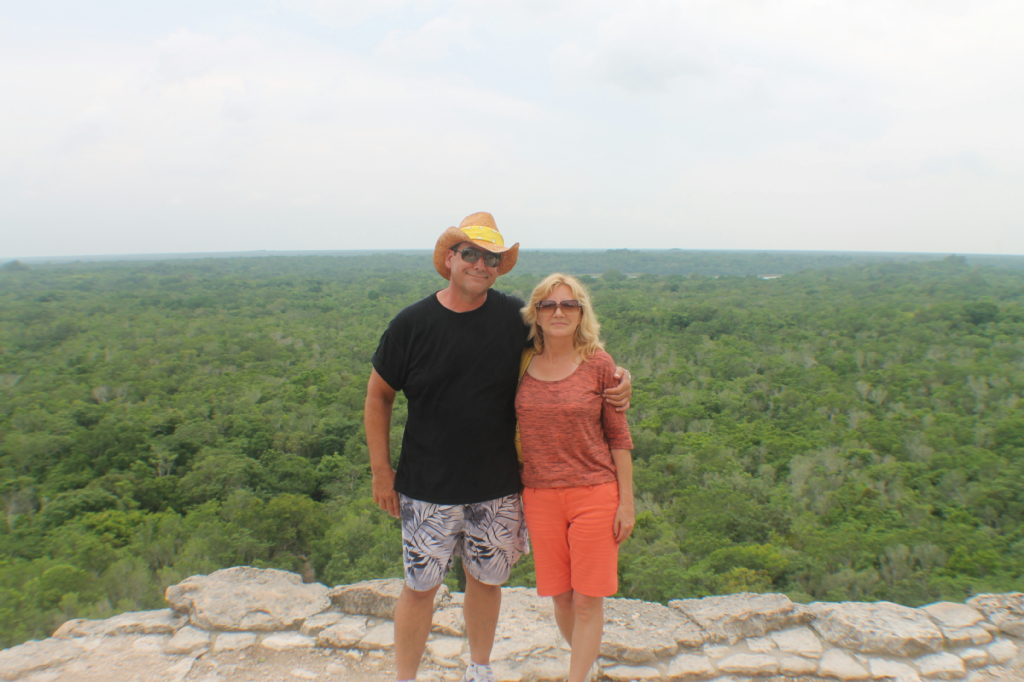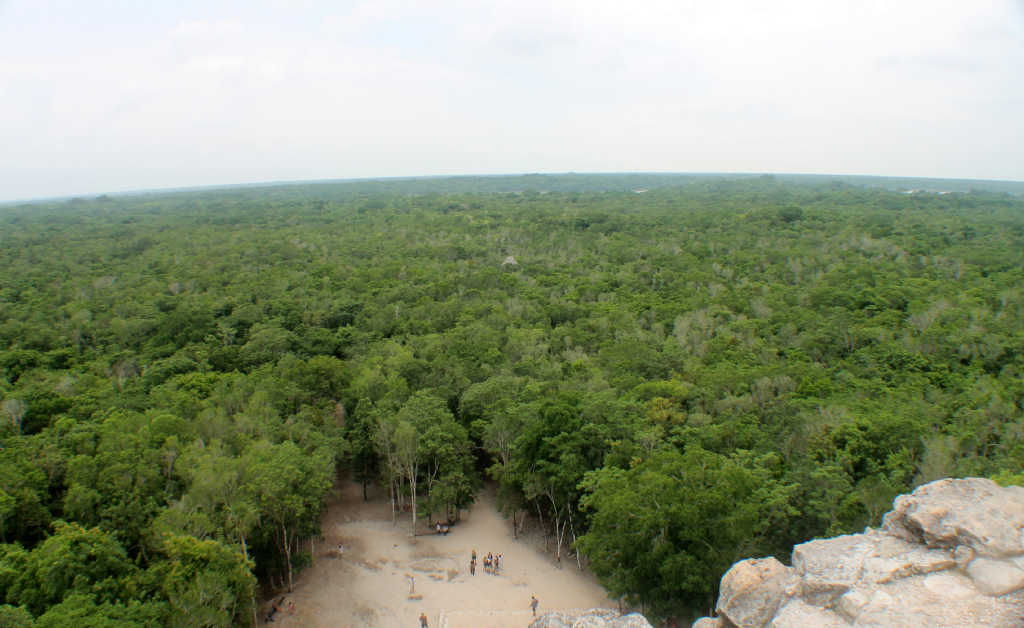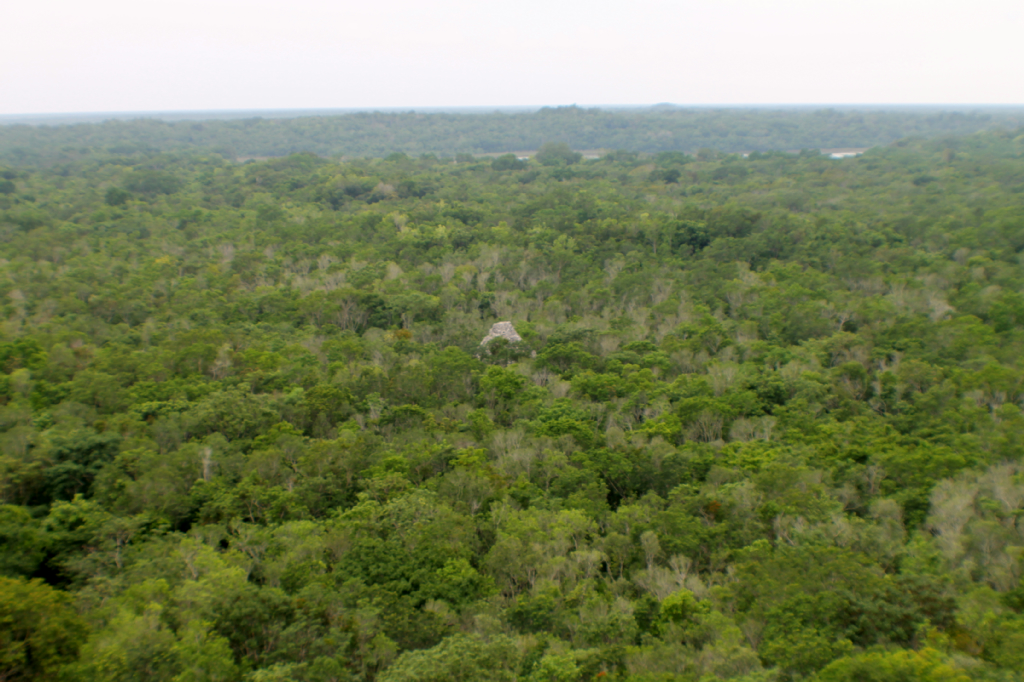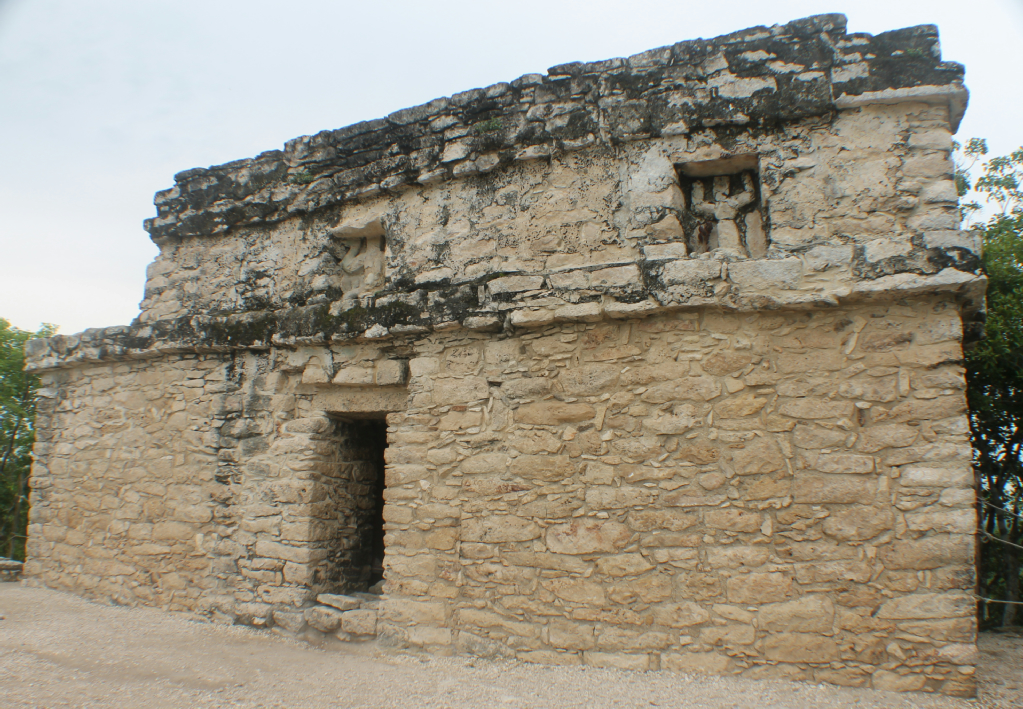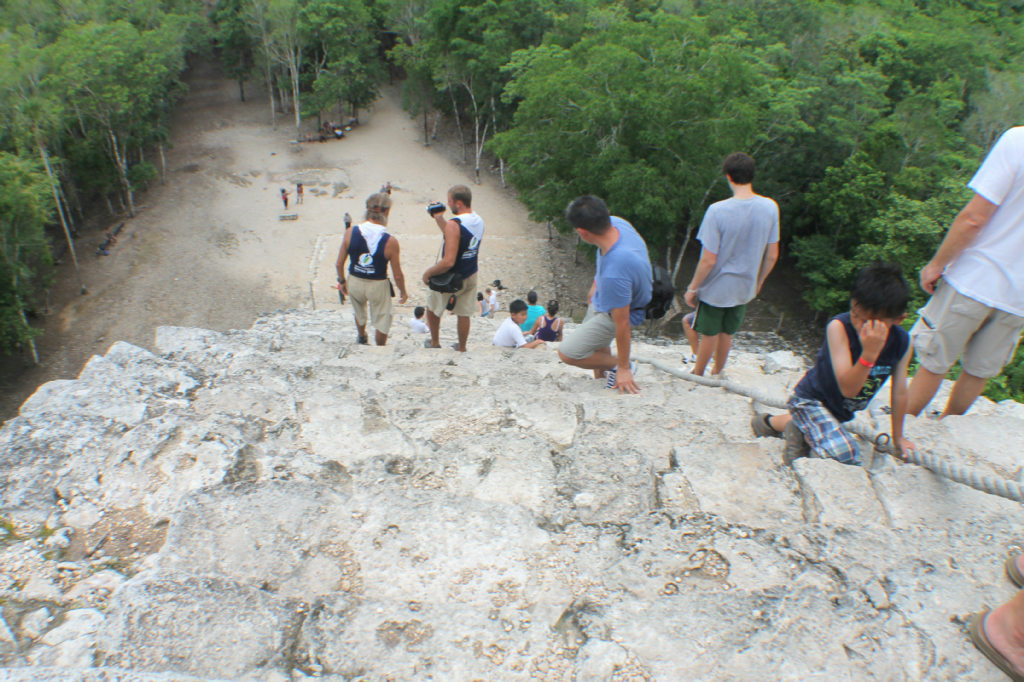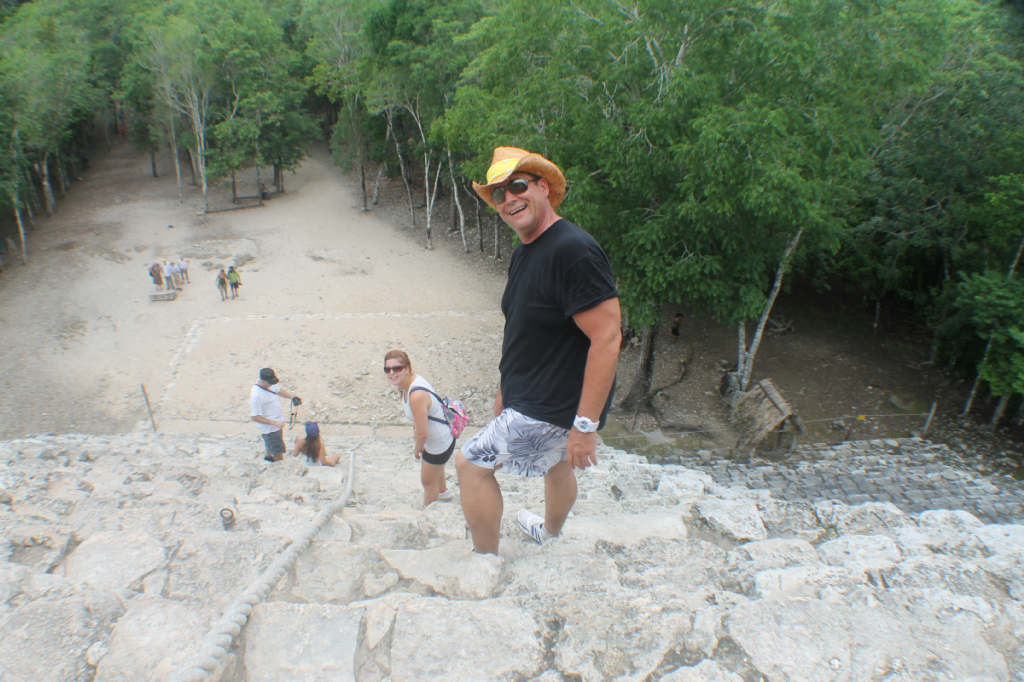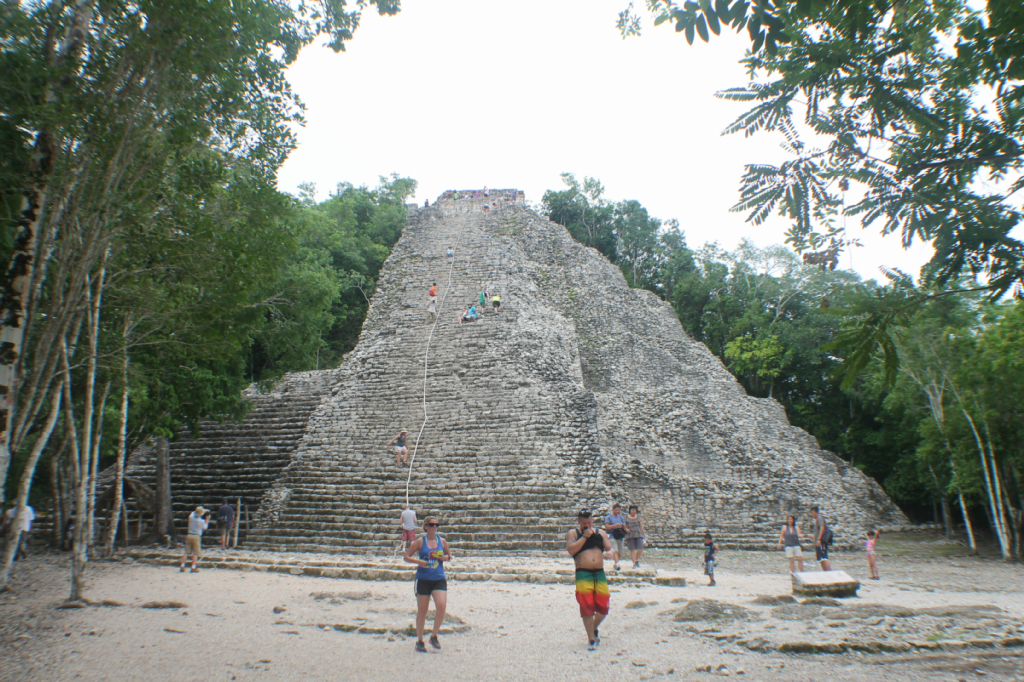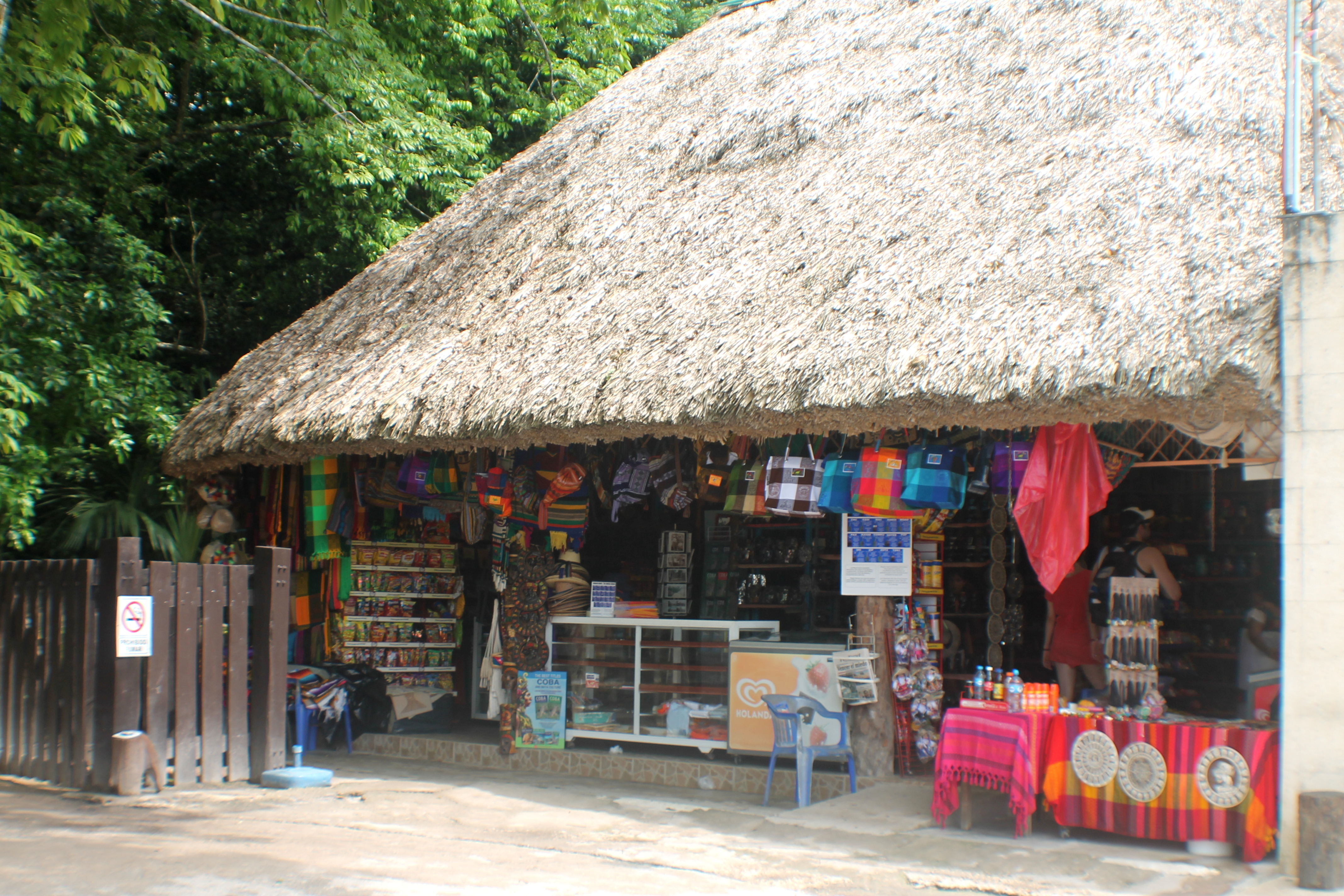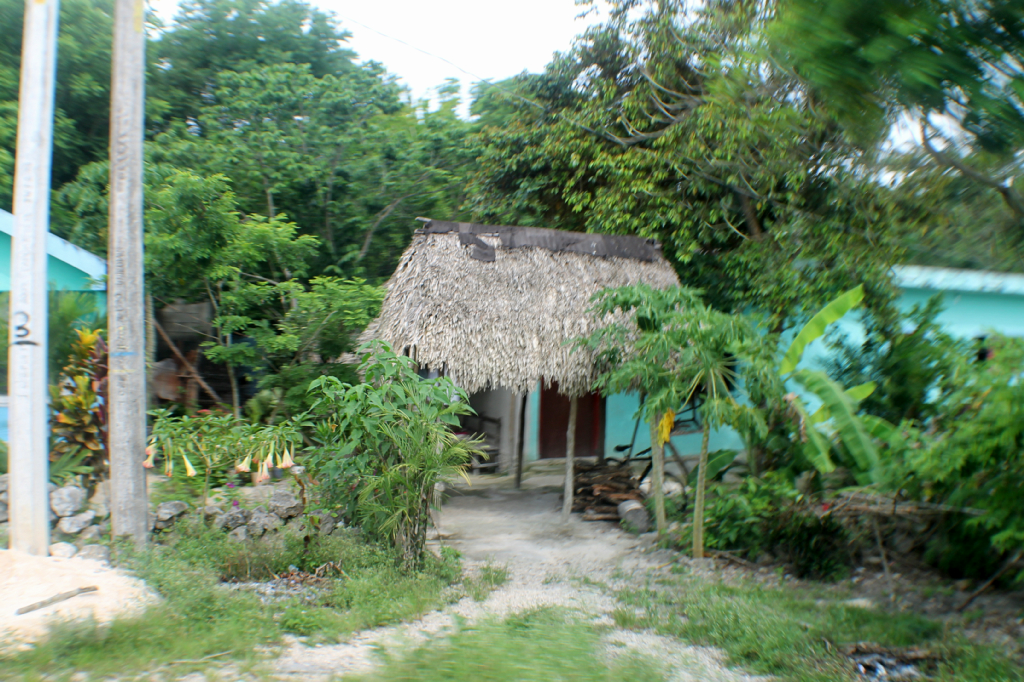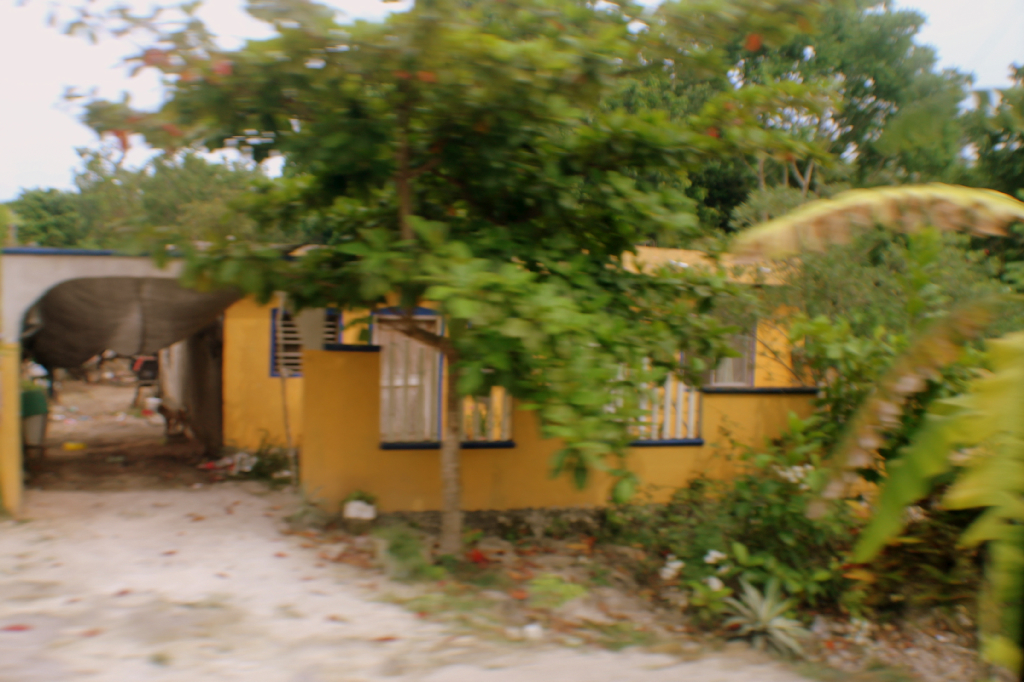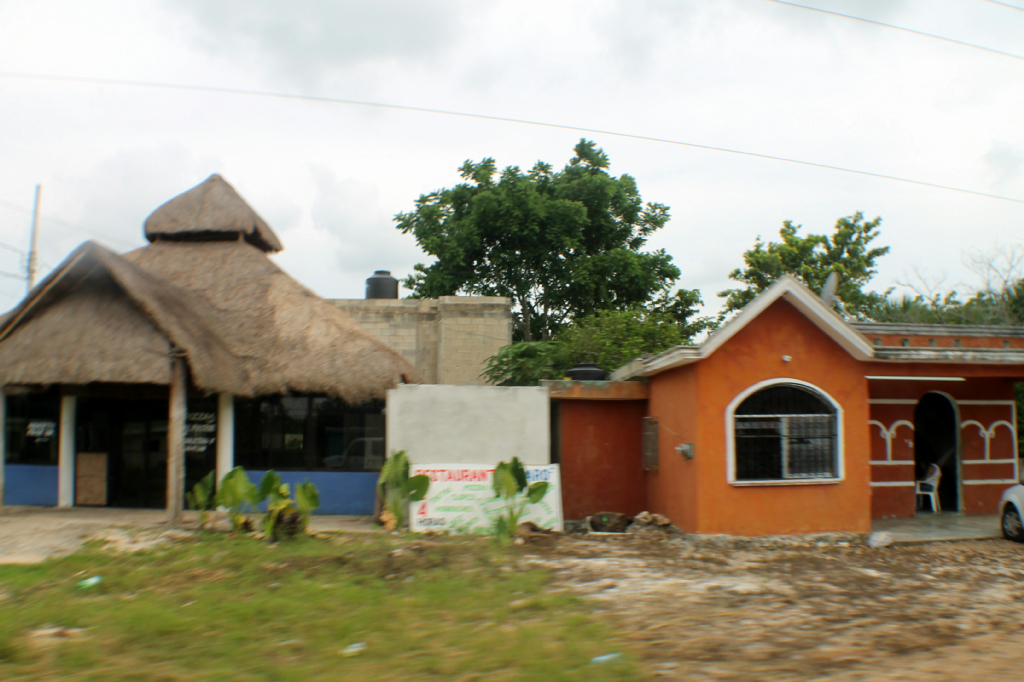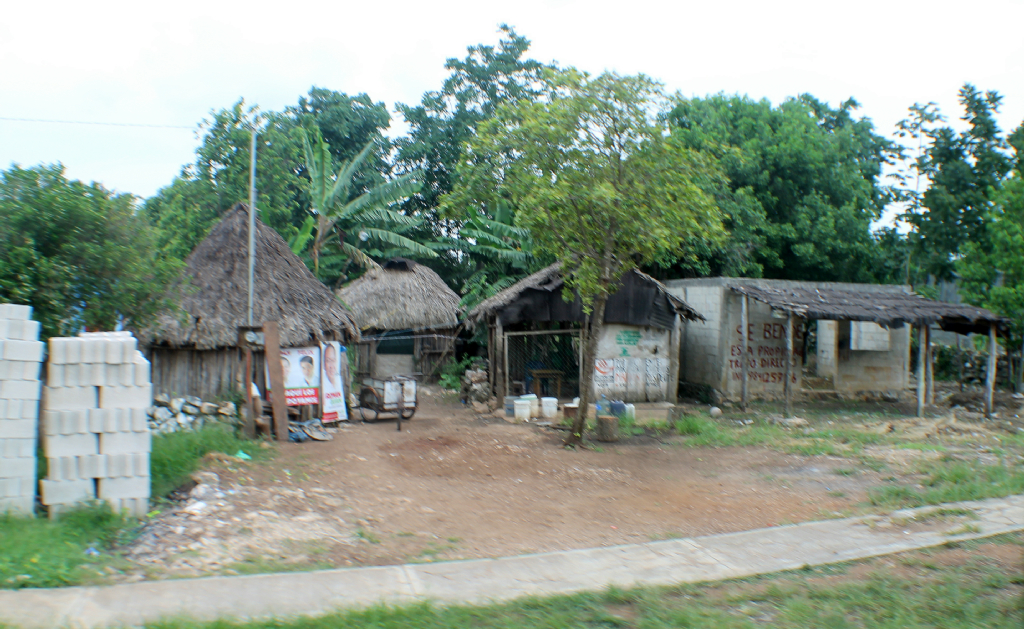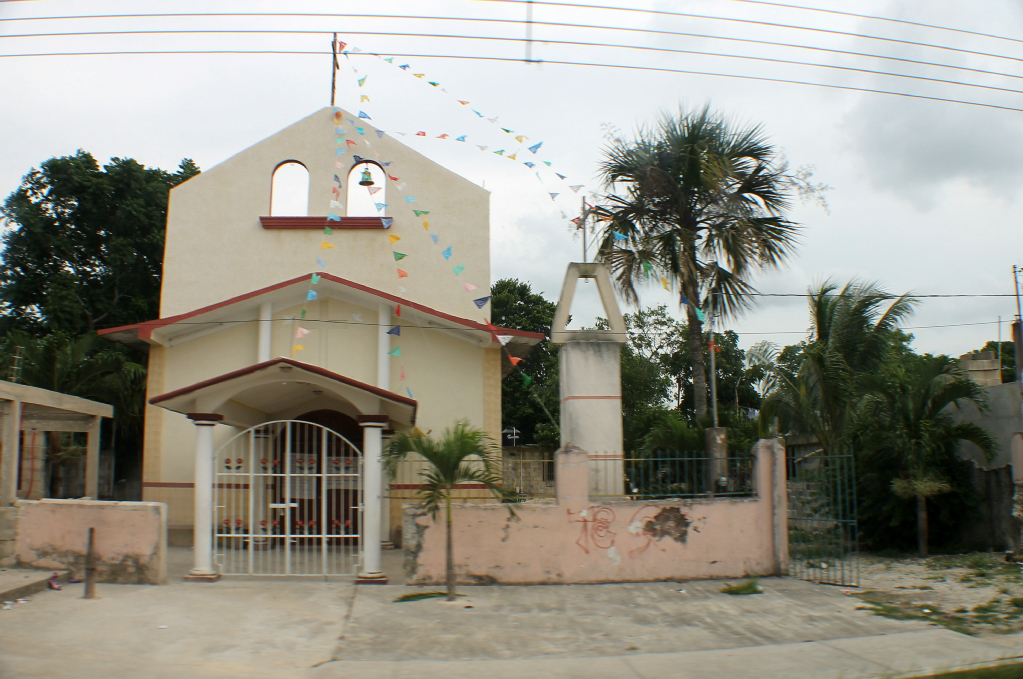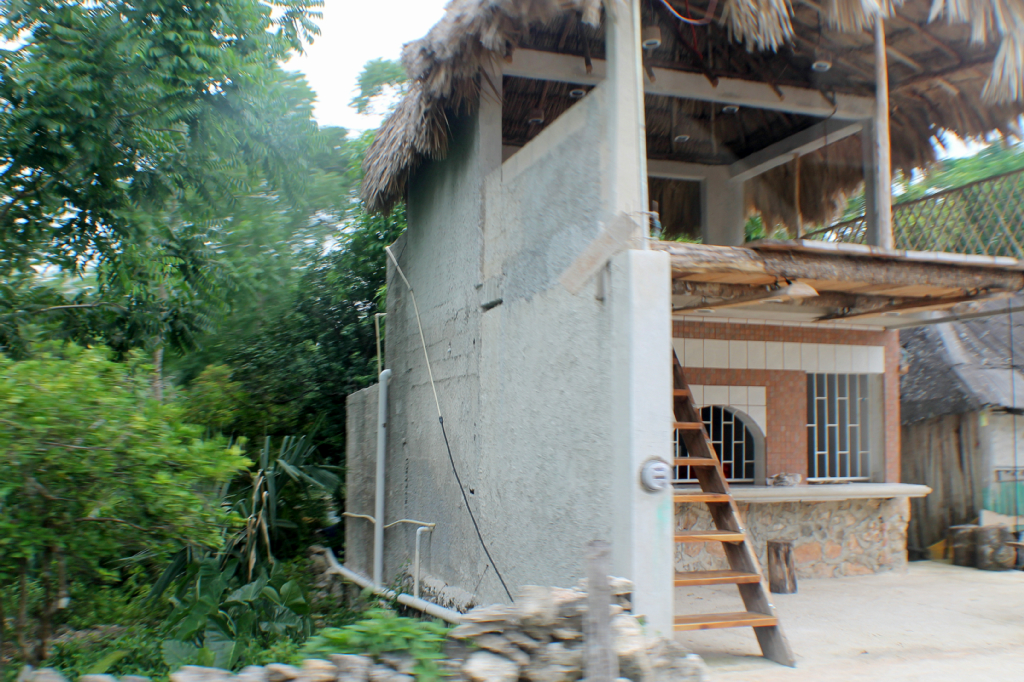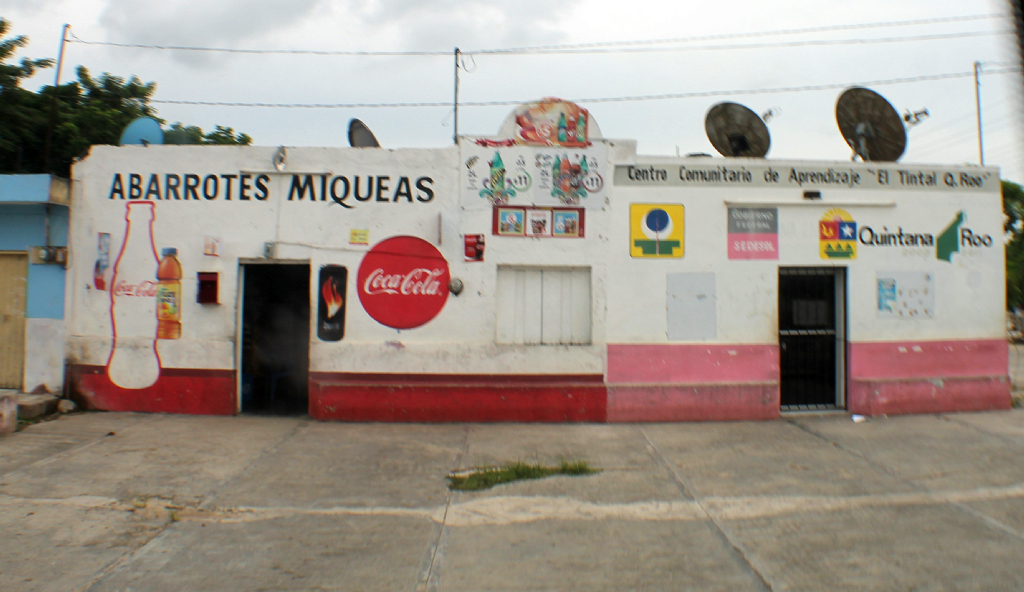In the afternoon our group arrived at the ancient city of Coba, located in the middle of the jungle. The Mayan name Coba means ‘ruffled waters’. It probably refers to the lakes in the area. Coba is located between two lakes and is close to three others. Since surface water is not common in the Yucatan peninsula, it makes sense that the Mayans built their city in an area among lakes. Coba was at one time a very large city spread over 80 square kilometers/30 square miles and was once home to around 50,000 people . Of the 6500 buildings which have been found at Coba only 10% have been excavated. The site was built during the Classic Period (600-900 A.D.), but also experienced a building boom in the Early Post Classic period dated 925 A.D – 1200 A.D. (from wikipedia). Here is Coba site map located right at the entrance.
Our group is on our way to explore the Coba ruins.
First, we got to see the pyramid known as Tempo de la Iglesia or ‘Temple of the Church’, located not far from the entrance. According to our tour guide, the origin of its name has an intersting story. The local people long ago saw a human body carved in relief on a stelae, which has since eroded, and got it confused with the Christian Virgin Mary. This structure, with its height of 24 meters/78 feet, is the second tallest after Nohoch Mul in the Coba complex .
Here are a couple of pictures from the series ‘I was here’. 🙂
More ruins are next to the Tempo de la Iglesia.
Underneath the stairs of Tempo de la Iglesia is this purification tunnel.
Inside of the purification tunnel.
The view across from the Tempo de la Iglesia.
Like many Mayan sites, Coba features several ball courts. This is the court by the entrance near the La Iglesia temple. The Ball court is not as large as the Grand Ball court at Chichen Itza, but it is in amazing condition considering its age. The target ring is quite small, especially considering the players aimed the ball using their hips. Per our tour guide, the ball game at Coba was played by important people, and not by slaves as many people think. However, slaves were forced to participate in bloodletting rituals following Mayan ball games. This is the difference in Ball games at Chichen Itza where the captain of the winning team was beheaded after the game.
The following false arch was used as a tunnel.

Some ruins are between the Ball court and the Tempo de la Iglesia.
The best resolution to watch the video is at 720p HD or higher.
The choices to reach the Nohoch Mul Temple are to rent a bycicle for $3 or t0 take a bycicle taxi for $10. We preferred the second choice, a bicycle taxi, or ‘Mayan limo’, as our tour guide called it.
Between Coba and Nohoch Mul is the curiously conical structure Xaibe. It is believed that this structure was used as a lookout tower. Xaibe is a Mayan word for crossroads. It is located near the intersection of four major sacbeob, that are the raised roads the Maya built. This building is interesting in its square-ish shape with rounded corners. These roads were made with white limestone and could be seen a long way down these paths, even at night. The main sacbe, or white road, goes almost to Chichen Itza.
The sacbeos reach other important Mayan cities, like Yaxuna, near Chichen Itza, Pole, now called Xcaret, and the Muyil. They are believed to have been used by the military and for trading.
A short distance from Xaibe is the second of Coba’s ball courts.
The centerpiece of Coba is the Nohochmul pyramid. “Nohoch Mul” means ‘large hill’. It stands 42 meters/138 feet high and has 120 steps. It is the tallest ancient Mayan structure in the Yucatan, taller than the pyramid at Chichen Itza. Only the pyramid at Tikal, in Guatemala, is taller than Nohoch Mul. The advantage of Nohoch Mul is that the visitors can climb it, as opposed to the pyramid at Tikal or Chichen Itza.
A side view of Nococh Mul.
Climbing up…
Dave is already on the top and I am still climbing.
Woo-Hoo! We are on the top! It was hot and humid, but fortunately, not sunny. Nevertheless, we were almost soaked at the top of the pyramid. It felt GREAT and the view was AWESOME!
Incredible view of the endless tropical jungle.
The Tempo de la Iglesia pyramid, which we visited at the Coba entrance, as seen from top of Nohoch Mul Pyramid and the edge of the lake in the background.
Atop Noh0ch Mul is a temple of the descending god. The door was the only light source for the room. On the outside façade of the building are featured up-side-down human figures, called “descending gods”. The same descending gods are found at Tulum.
Going down is harder than climbing up. The steps are pretty steep and uneven and there is only one guide rope attached in the middle of the pyramid to hold onto if needed.
One more look at the beautiful pyramid, before our departure from Coba.
Some other structures are across Nohoch Mul temple.
Coba has many carved tablets, known as stele’s. The detail is hard to make out due to centuries of weathering.
While we were climbing the pyramid, our ‘limo’ driver was waiting for us not far away.
Exiting Coba.
Here is a little Mayan market. Nice souvenirs made from bones and others materials were for sale there among other things.
Large selection of handmade goods and souveniers there. We bought a pretty wild cat statue in this store. 🙂
On the way to Cancun, which is about 131 kilometers/108 miles from Coba, I took some street pictures from the van’s window. It looks different.
Next post will be about our Chichen Itza light and sound trip.
